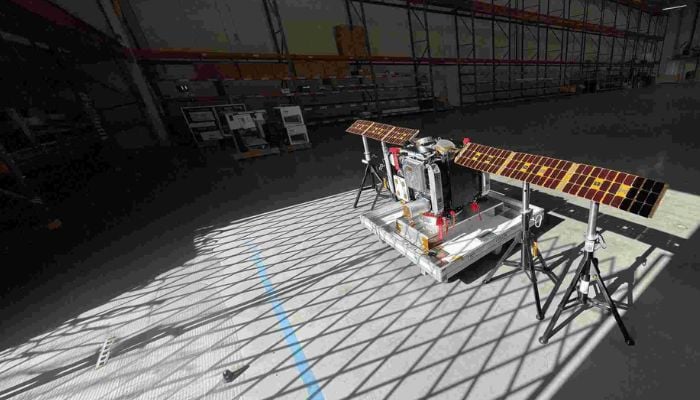Scientists are actively exploring a groundbreaking idea at the Sandia National Laboratories in New Mexico.
The primary motive of the new tool is to utilise the infrastructure of concentrated solar plants in order to potentially detect dangerous asteroids.
However, the new approach marks a new and cost-effective tool for planetary defence.
“A heliostat is a very large, motorized mirror that concentrates sunlight on a tower like a magnifying glass.” said Sandia scientist John Sandusky in conversation with Space.com.
He further explained, “As the sun moves across the sky, the heliostat changes orientation to hold the sun’s reflection fixed.”
John Sandusky’s primary purpose is to find the dangerous asteroids that pose a threat to Earth.
The new application suggests that heliostats would be used at night when they are not needed for their usual function of collecting sunlight.
John Sandusky shed light on the new method’s impact, explaining, “Concentrating starlight at night the same way they concentrate sunlight during the day. Whereas sunlight boils water for the electrical grid, starlight generates a mere trickle of electricity on large photodiodes that are like the cells of a solar panel.”
Meanwhile, the significant plan is to repurpose the thousands of mirrors at existing U.S solar farms that are idle at night. This new approach will focus on asteroid detection.
By repurposing the existing equipment for a new use, scientists can definitely create a more powerful and cost-effective tool for planetary defense.
Primarily, this specific method of detecting asteroids with solar farms is a different kind of detection. This method works like a radar instead of creating pictures by mapping.
It follows the process of detecting a moment of an object across the sky, converting that motion into a signal and helps scientists identify asteroids by their speed instead of relying on an image.
Sandusky explained this phenomenon as, “The heliostats sweep gently against the stars, holding a steady rhythm through the night. The flow of light from the stars produces one tone. Light from an asteroid moving along the sweep produces a slightly different tone, because each sweep encounters the asteroid at a slightly different position against the stars.”
He has been testing this for nights, using one of the 212 heliostats at the Sandia National Solar Thermal Test facility in Albuquerque. Perhaps, he has not made any attempt at an asteroid.
It has been observed that the initial experiment suggests the heliostat to be slowly redirecting and sweeping across the night sky. The main hurdles which came across during the experiment is to demonstrate scalability from one heliostat to many.
Afterwards, reprogram the heliostat controllers to sweep against the stars instead of the horizon.
The current results have certain limitations and require more secure funding for the heliostat to make regular observations.
Nevertheless, scaling the single mirrors to entire solar farms, we could have a margin to detect the smaller and distant objects, and to prepare for any potential threats in future.
